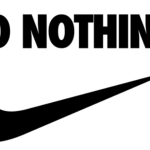21, 2016

The Friday Four: Pricing strategy, Satisficing, Status Quo & Procurement departments
After one week hiatus, I present to you Installment #7 of “The FridayFour.”
Want to get The Friday Four sent right to your inbox?
 1 – Why your pricing strategy is killing your business
1 – Why your pricing strategy is killing your business
I learned from the master this week. Check out my podcast Interview with Patrick Campbell, co-founder and CEO at PriceIntelligently.
Patrick and I discuss:
- The fears associated with not making a sale because of price.
- His survey method for identifying the price prospects are willing to pay for your product
- How to deal with raising a product’s price and the associated retention drop off.
- Plus a BUNCH more…
LOTS of practical ideas and tips that you can put to work for your sales process right away.
2 – Satisficing
Herbert Simon won the 1978 Nobel Prize for his contributions to the field of economics.
“The term satisficing, a combination of satisfy and suffice… Simon used satisficing to explain the behavior of decision makers under circumstances in which an optimal solution cannot be determined.” (Source: Wikipedia)
You know this. Your customers are constantly making suboptimal decisions – purchasing inferior products, using manual processes, deliberately choosing status quo over an improved future state with a near certain positive future outcome.
Why do people (customers) partake in satisficing? A few reasons include the risk of uncertainly, bounded rationality, group dynamics in decision-making, switching costs, and bias towards status quo (see below).
So what can you do about this?
Remember that as a startup, you don’t need 100 customers today, or even 10 customers today. You just need your next customer. We need only one innovator or early adopter at our target customer to get that next customer.
The good news is that most companies have these innovators and early adopters. You just have to find them.
How?
Look for executives speaking about innovative topics at industry conferences. Even if you’re in an old, stodgy industry, most industry conferences have a technology or innovation track. Target the people you see on these panels.
Find the ones active on social media – the ones that are updating, tweeting, and posting content. These are signals that you might have an early adopter or change agent at hand.
Don’t sell to that person. Ask that person for help. Tell them about how you view the problem you’re solving and how you’d like to get their opinion on how they might approach it.
Of course this isn’t a slam dunk strategy. You still have to do the work to craft intriguing emails and InMails, and expect that maybe only 1 in 10 reply back. That’s okay. Remember, you’re not looking for the next 100 customers, just the next one.
 3 – The dreaded Status Quo Bias…
3 – The dreaded Status Quo Bias…
Have you heard – “I really love what you guys are doing, but we’ve decided to hold off on doing anything until [next month/next quarter/next year]?”
It’s a death blow to your sales process.
As a startup, we’re often not competing head-up with another company for the business. Instead, status quo is our biggest competition and “do nothing” is always an option for our prospects.
As Startup Sellers, our job is to reduce the friction and the perceived risk in buying and using our product. If you’re hearing the “not right now” excuse a few times over from recent prospects, I suspect a few things might happening here:
- Your “ask” is too big, meaning that you’re looking to make too big of a sale out of the gate. The bigger the “ask” you’re making, the more risk and the more work and risk you’re asking the customer to do and take. Scope down your initial engagement with a pilot program, and think AND not OR. “Yes [INSERT CUSTOMER NAME], you can keep using your existing system AND we’ll fit alongside it to solve the problem that you have..”
- You haven’t defined the customer’s problem. Even if customer is an inbound lead… More so… ESPECIALLY if the customer is an inbound lead, you’ve got to make sure the customer has a super clear problem to solve and isn’t just interested in your product because they thought it looked cool or a friend told them about you.
- You haven’t given the customer a super clear WHY for using your product. “We don’t have budget” is code for “we view you as a cost.” Your job is to position your product as an investment for which there will be a clear and measurable ROI in terms of increased revenue or efficiency, or reduced costs or risks.
Review your recent “do nothing” losses and see if your ask was too big, if you had a clear view of the problem, and if your customer was clear on the ROI in using your product.
4 – Are you doing customer development interviews with procurement and vendor management?
When’s the last time you did a customer development interview with someone on the vendor management, procurement, or IT security team at your target customer?
Probably never, right?
Just because the business team wants to buy your product doesn’t mean that the procurement team will let them buy it.
It’s easy and even a lot of fun to do customer development interviews with the business users for your product. Talking to a product manager, a marketing manager, a VP of Sales or a CFO about how they’re dealing with business challenges is the magic behind discovering and solving problems with our product.
 But…
But…
If you’re selling a SaaS product to the enterprise, in nearly all cases you’re going to have a brush with the procurement and vendor management department. Your interaction will be indirect in smaller software purchases (i.e. your garden variety ~$100/month product), or direct and in-depth with larger purchases (i.e. > $10k/year).
Even when selling a smaller product, if it houses customer data (or their customers’ data), or your product is involved with a core business process (i.e. finance, legal, operations), you’ll need to go through some form or fashion of a procurement process and probably even a security audit.
Whether you’re a startup CEO or a salesperson, block out two hours next week to start doing this.
Make sure you’re talking to managers and directors – these are the people in the middle of the organization that you’ll be dealing with – the people responsible for making sure you’ve got all of the right documentation, completed security audits, and reviewing your financial statements.
I just searched LinkedIn and found 224,978 results for “Procurement Manager.” Ask these folks about the standard requirements for vendors like you. Ask them about their company’s attitude in working with startups. Ask them about the types of exceptions they make for new vendors that don’t pass 100% of the security tests.
(One of my secret projects bubbling is to write a sales book entirely from the perspective of purchasing managers…)
So stop right now, go to your calendar, and block out two hours next week. Seriously. Now. Do it.
Besides, this email is over anyway. Seems I had a lot to share after a week off… If you made it this far, thanks for reading. If not, well, maybe next time.
Now go book the two hours for yourself…
